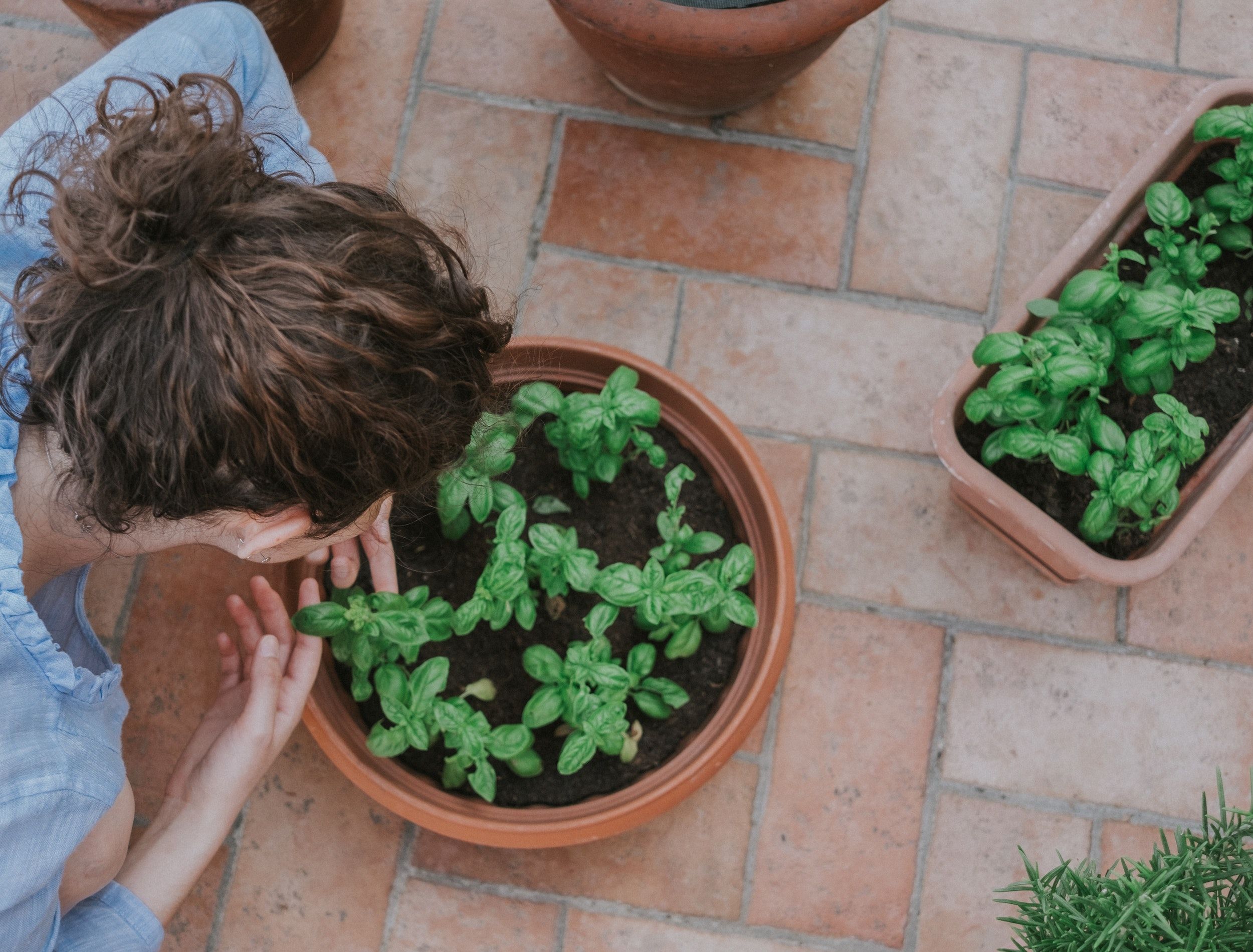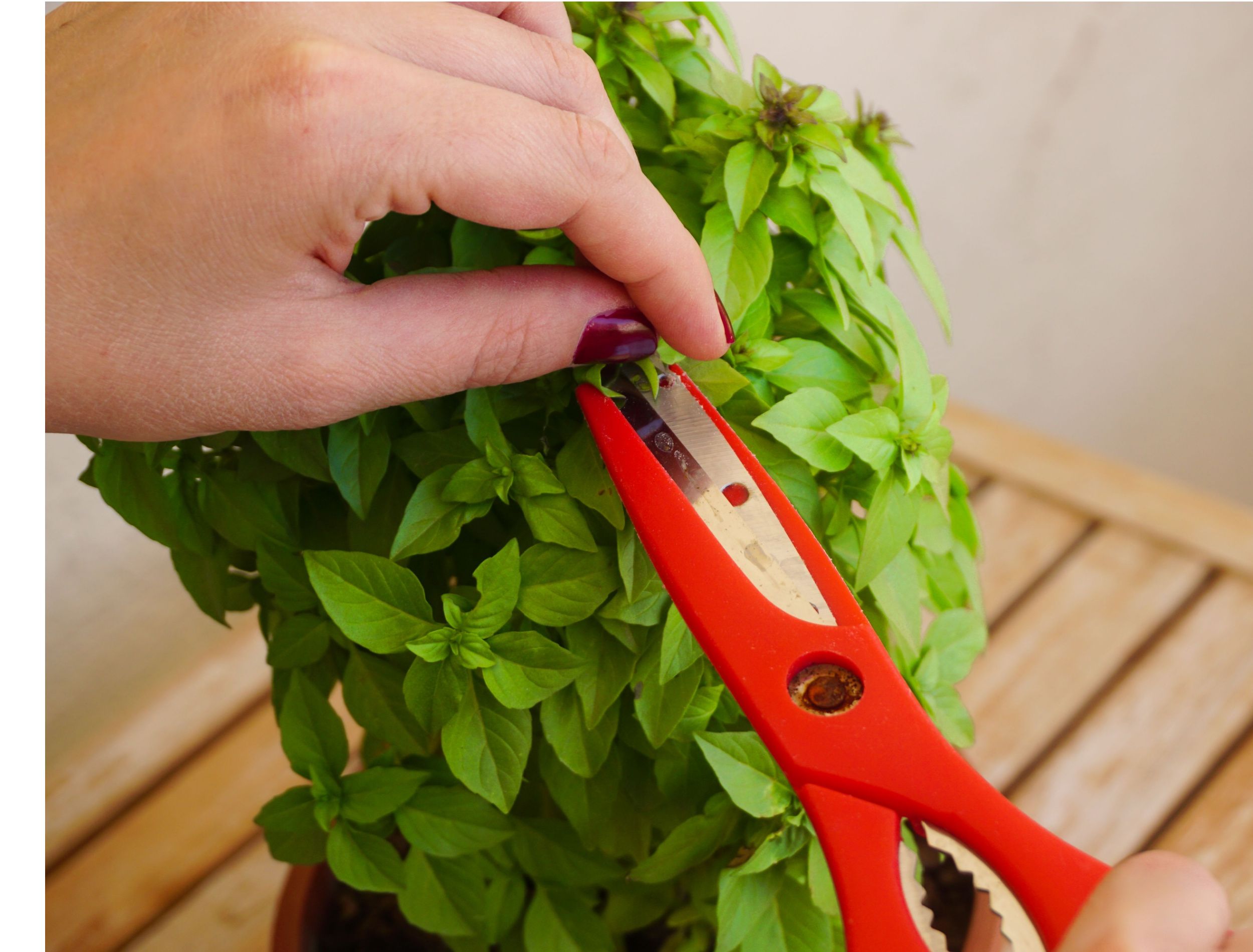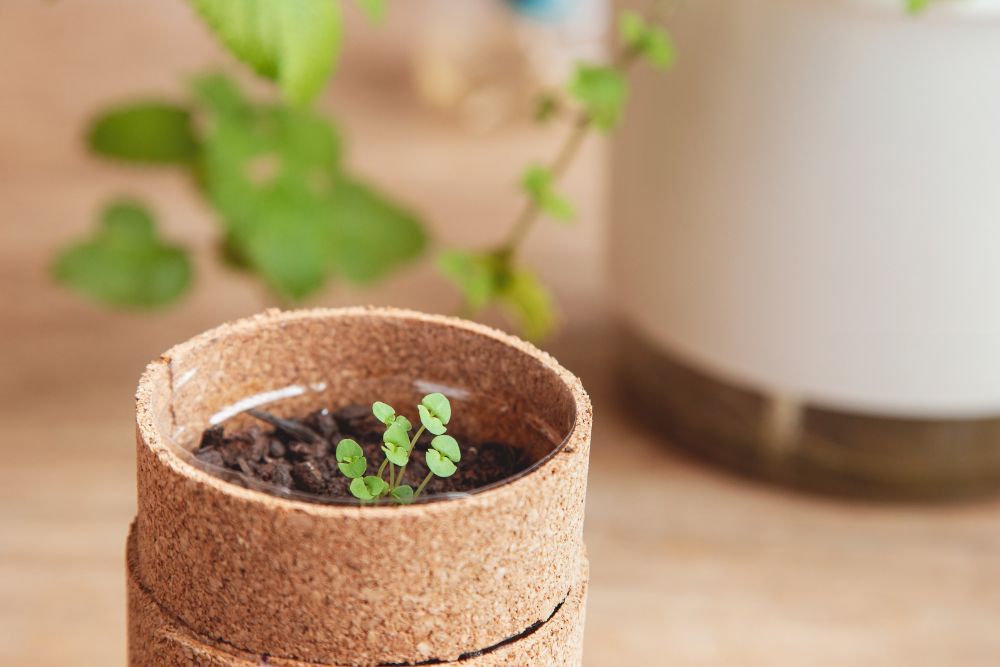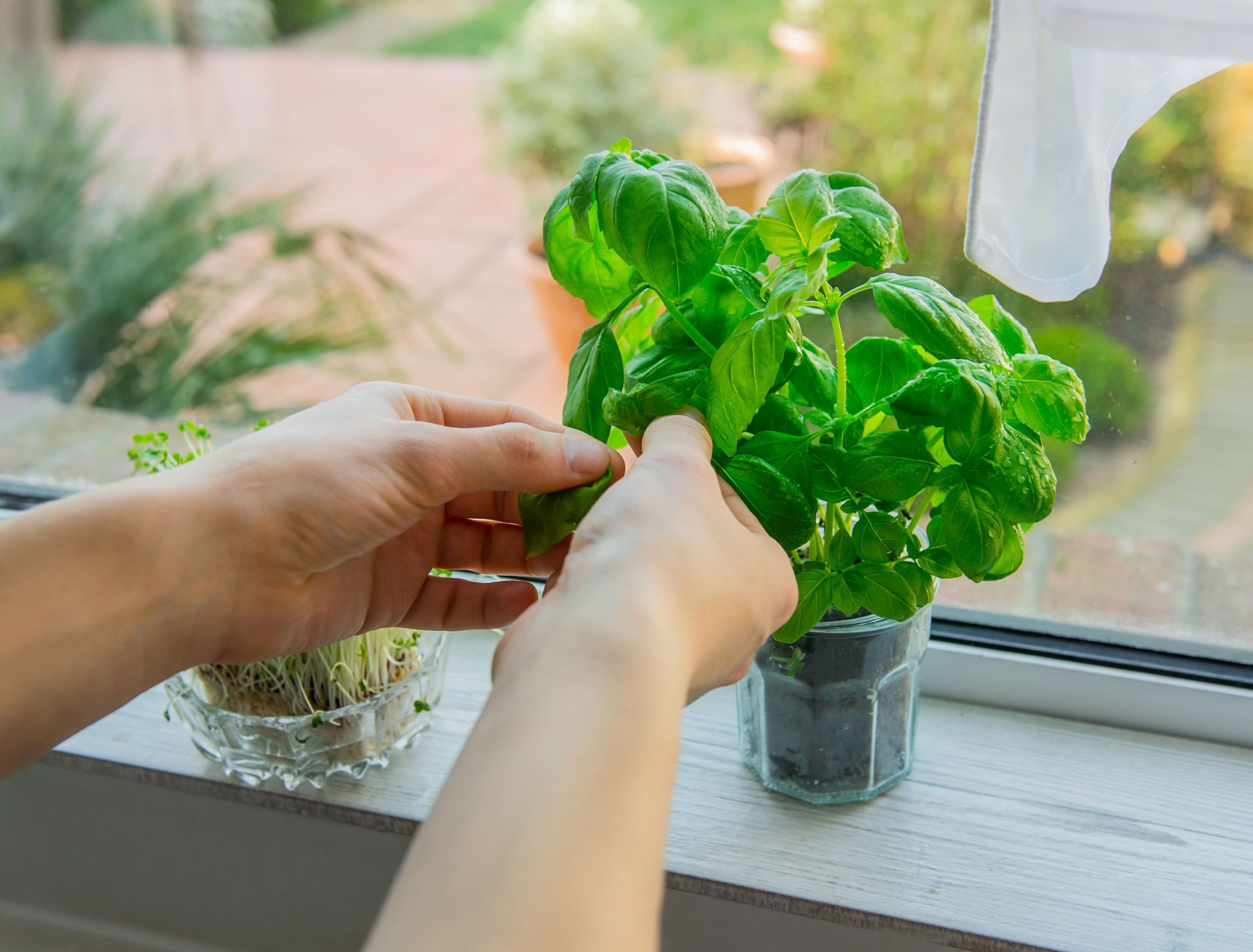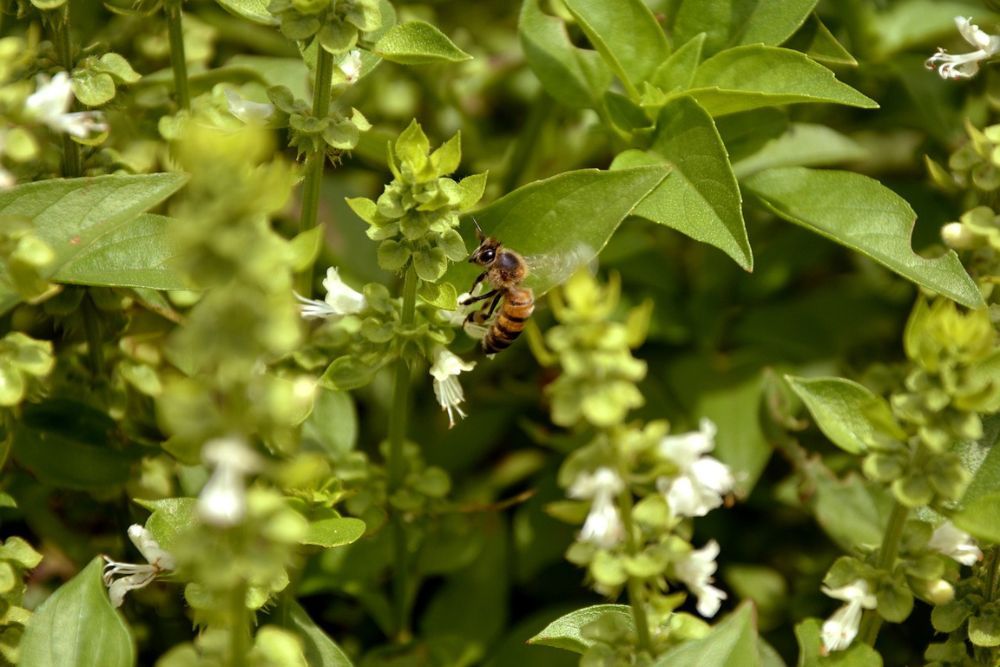Basil is a scrumptious herb that makes an excellent garnish for recipes. It is a popular choice for kitchen herb gardens as it grows fast from seed (in just five to 10 days), and there are a variety of types to cultivate.
Although you can find fresh or dry basil at a store, growing it provides a steady supply of fresh ingredients all year. After all, once summer is over you can propagate your basil and continue to cultivate it indoors. Whether you're growing basil in the garden or inside, it's important to harvest the herb properly. Learn how to harvest basil, then get tips for storing it, so you can enjoy flavorful herbs in your favorite recipes.
What You'll Need
Before you jump into your herb garden, first gather a few essentials
- Seeds (grow basil)
- Basil plants
- Sharp scissors
- Jar of water (propagation)
- Paper bag and empty jar (collecting seeds)
- Twine (drying)
- Ice cube tray (freezing)
- Olive oil (freezing)
Step 1: Cultivate a Thriving Basil Plant
You can find basil plants in garden centers or grocery stores, or cultivate them from seed. If you are growing basil from seed, sow each seed ¼ inch deep in soil with a pH between 6.0 and 6.5, when it's 50 to 70 degrees Fahrenheit, and choose an area that gets six hours of sun daily.
Keep the soil moist to the touch to encourage germination. In about a week, watch for small green sprouts. Then as a general rule, continue to irrigate your herbs whenever the soil feels dry to the touch 1 inch deep.
You can also propagate plants like basil from cuttings. Use sharp scissors to snip off a 4-inch section of basil that doesn't have flowers. Pinch off all the leaves 2 inches above the cut and keep up to two pairs of leaves at the top. Pop it in a jar with room temperature water and refresh the water every three to four days. Then, wait for the roots to reach 1 inch before moving it to a pot with soil, or keep it growing in water indoors.
Step 2: Pick Individual Basil Leaves
Basil produces a larger yield with proper pruning or when you pick one or two leaves frequently to harvest them. Wait until the plant has six leaves, then pick individual basil leaves by pinching them off of the stem with your fingers or using sharp scissors. Keep the bottom two pairs of leaves or remove less than ⅓ of the plant. Leaving the rest encourages it to continue growing scrumptious foliage.
There are several kinds of basil. Grow 'Genovese' for a delicious cultivar of sweet basil (Ocimum basilicum), try spicy and hot Holy basil (Ocimum tenuiflorum) for brewed teas, or African Blue Basil (Ocimum kilimandscharicum x basilicum) that pairs well with olive oil.
Step 3: Identify Basil Leaf Nodes
When harvesting a larger section of the plant, instead of individual leaves, identify the leaf nodes. The leaf nodes are where the leaves attach to the stem. Then, use sharp scissors to prune the central stem just above a leaf node, about six weeks after you plant seeds or when your plant has six or more leaves. Prune back to the second set of leaves above the ground and harvest the basil.
When you prune or harvest the top portion of the plant, leaving the lowest two pairs of leaves, it encourages multiple branches to grow from the base of the plant and increases your harvest.
Step 4: Harvest Before Flowering
Basil generally flowers in the middle of summer. It prefers soil temperatures between 75 and 85 degrees Fahrenheit, so toasty mid-summer temperatures can prompt your plant to flower. When your basil starts flowering it switches from growing luscious foliage to developing blooms and seeds.
Going to seed makes it woody and reduces the number of leaves and harvest size. The leaves also get bitter and less flavorful. Whenever you see that a branch has at least six leaves prune it back to the lowest pair of leaves at the node to harvest it. You can even follow this approach to harvest the entire plant and use scissors or sheers to cut above the node with the bottom set of leaves.
Pinch Flowers As They Form
Seeing flowers doesn't mean your basil harvest is over. When flowers are forming pinch them off with your fingertips to stop the flower spikes producing seeds. Once you see seed pods, however, it is better to collect them than harvest the foliage as it is typically bitter at this point.
You can let a few plants flower and collect seeds. Seeds develop in the flowers in pods or capsules. Once the pods turn brown or feel brittle you can remove the flower spike. Let the foliage and flowers dry completely, then pop the spike in a paper bag, and shake the seeds out. Save the seeds for next year by storing them in a jar in a cool dry spot.
Step 5: Enjoy and Store Your Basil
After all your dedication in the garden, remember to enjoy and store your basil! You use it right away as a fresh garnish in your dishes or if you want to enjoy your basil later consider preserving it.
Freezing Basil
Cut up the basil or preserve whole leaves by tucking them in a freezer bag and putting them in the freezer (after you wash and dry them). Another hack is to mince your basil and fill up an ice cube tray with it. Then, top it off with water and put it in the freezer. Anytime you need to elevate a dish like soup or sauce, take out a basil ice cube and add it to the recipe. Usually, frozen basil keeps for a year.
Drying Your Basil Plant
Tie a piece of twine around the bottom of the basil stem. Then hang the entire plant upside down in a dry room. After about a week, the foliage should be completely dry, so you can separate it from the stem. Then store it in a container that is airtight like a jar. Generally, dry basil keeps for a year.
You can also freeze basil with olive oil instead of water. Take out a baking sheet and cover it with parchment or wax paper. Combine ¼ cup of chopped fresh basil with 2 teaspoons of olive or vegetable oil. Portion the basil oil mixture by the teaspoon onto your baking sheet and freeze it. Once it is frozen you can put your basil oil droplets into a freezer bag.
Happily Harvest a Bumper Basil Crop
Harvesting basil is a delightful, delicious, and fun part of growing your own herbs. You can pick basil leaves individually by pinching them off with your fingertips or cutting back any stem that has more than six leaves. Simply locate a leaf node then use scissors to prune it back to its second set of leaves. Then enjoy your basil fresh right away or preserve it by storing it in the freezer or drying it for later use.
What are your tips for harvesting basil? Share your expertise in the comments below!

